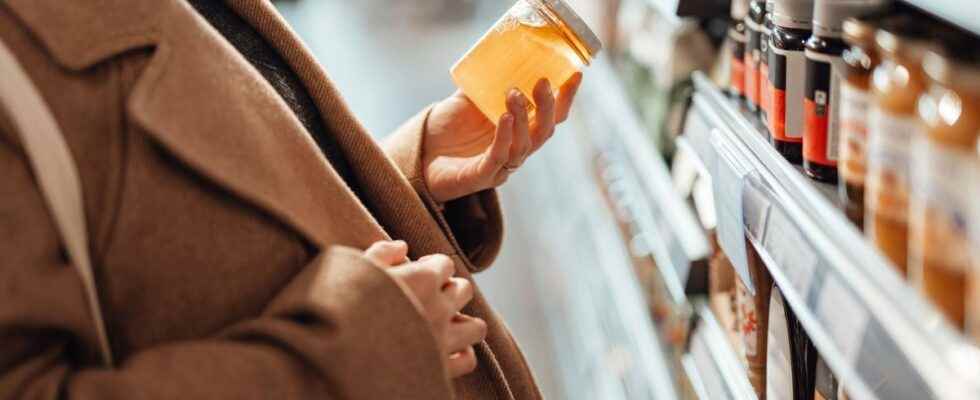Published on
Updated
Reading 2 mins.
As of July 1, the origin of honey packaged in France will be specified on the label. Satisfaction of the National Union of French beekeeping which welcomes this measure to enlighten the consumer.
Unless shopping directly from a beekeeper, buying a jar of honey in the trade could be very uncertain, even random. At least that was the case until the end of June.
Compulsory mention of origin
Since this Friday, July 1, products made from blended honey packaged in France must clearly mention the origin of the honeys they contain, in accordance with the decree of April 4, 2022 making mandatory the labeling of all the countries of origin of the honeys used.
“No percentage is indicated, says Yves Delaunay, vice-president of the National Union of French Beekeeping (UNAF), but the labeling must list the countries of origin of the honey in descending order.”
Prior to the application of this measure, only vague and imprecise statements such as “Mixture of honeys originating in the EU”, “Mixture of honeys not originating in the EU” or, even more vaguely, “Mixture of honey originating and not originating in the EU”, appeared on the labels.
More than 40% of non-compliant honeys
French beekeepers produce between 20,000 and 30,000 tonnes of honey each year, while national consumption amounts to 40,000 tonnes, with a preference for honey from France. In other words, underlines the Directorate General for Competition, Consumer Affairs and Fraud Prevention (DGCCRF), “significant quantities of honey are imported, especially from Spain and Ukraine” – this was before the war. Without forgetting China, a major exporter, too.
However, honey is one of the products most victims of fraud. According to a survey by the DGCCRF, carried out in 2019, 43% of the honeys analyzed in the laboratory were “non-compliant” and 2% “to monitor”.
Most of the non-compliances have to do with labeling problems (lack of indication of the country of origin, etc.), but also with adulteration (addition of exogenous sugars, etc.). Note that to be sold under the name “honey”, no substance (other than honey from the hive) can be added.
NO to diets, YES to WW!
Promotion of French know-how
For Yves Delaunay, “this new labeling is a joy”. Besides the fact that the application of the decree of last April marks the culmination of a fight that dates back to 2018, it will above all “to enlighten the consumer in his purchases”. And get the French conditioners, few on the market, out of a mercantile logic necessarily detrimental to the quality of products made up of several honeys. “From now on, it will no longer be possible to display low prices, without having to indicate what is the real share of French honey in the composition of the product.”, develops the vice-president of the UNAF.
In short, the end of abuse, for the consumer, and, for French beekeepers, of unfair competition. This new labeling should make it possible to promote French know-how. “This is indeed our hope. We know that the French want quality honey, this new more rigorous labeling will allow them to make the right choice.”, rejoices our interlocutor.
The only downside is that this regulation only applies to French conditioners, not to their European colleagues. “We are now counting on the government to bring a similar evolution of the regulations at European level.”, writes the UNAF in a press release of April 13th. It is up to the consumer to help sort it out. The defense of quality is also played out in the shopping cart.
